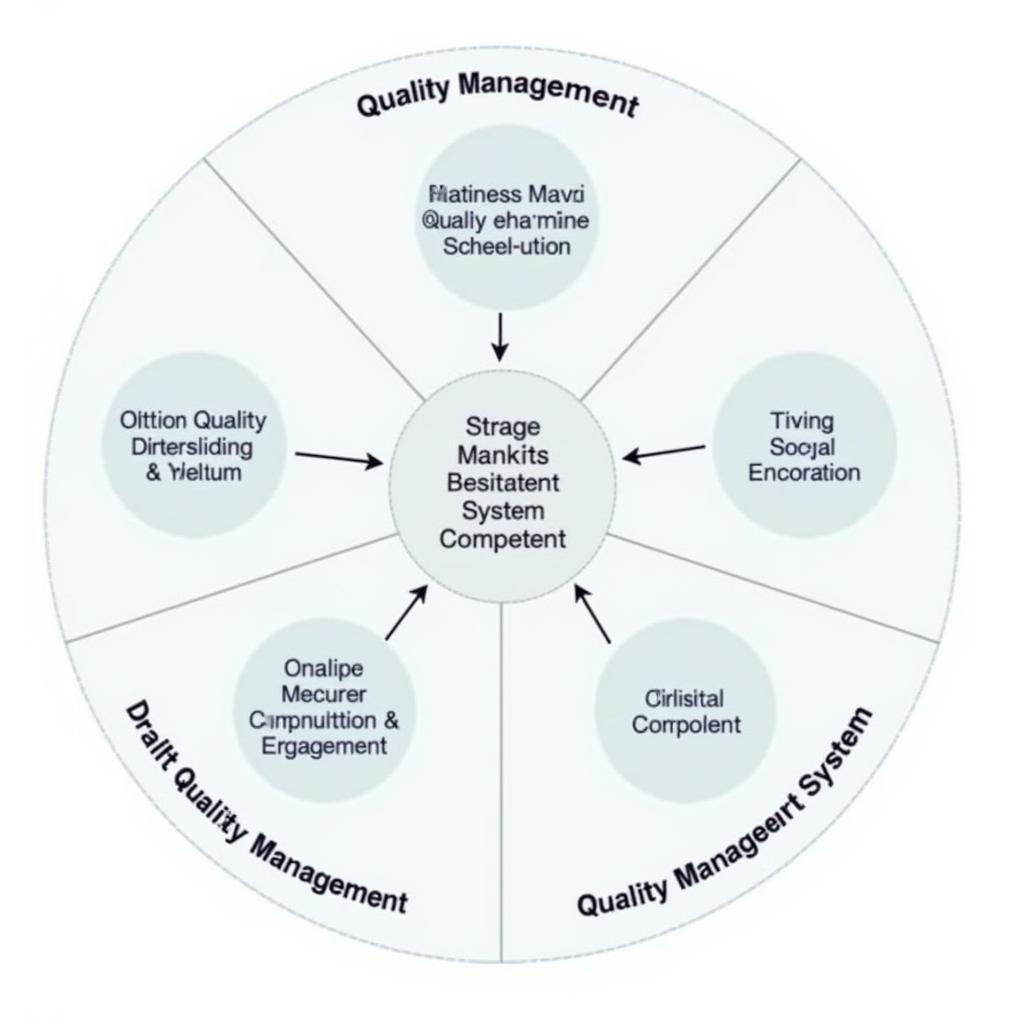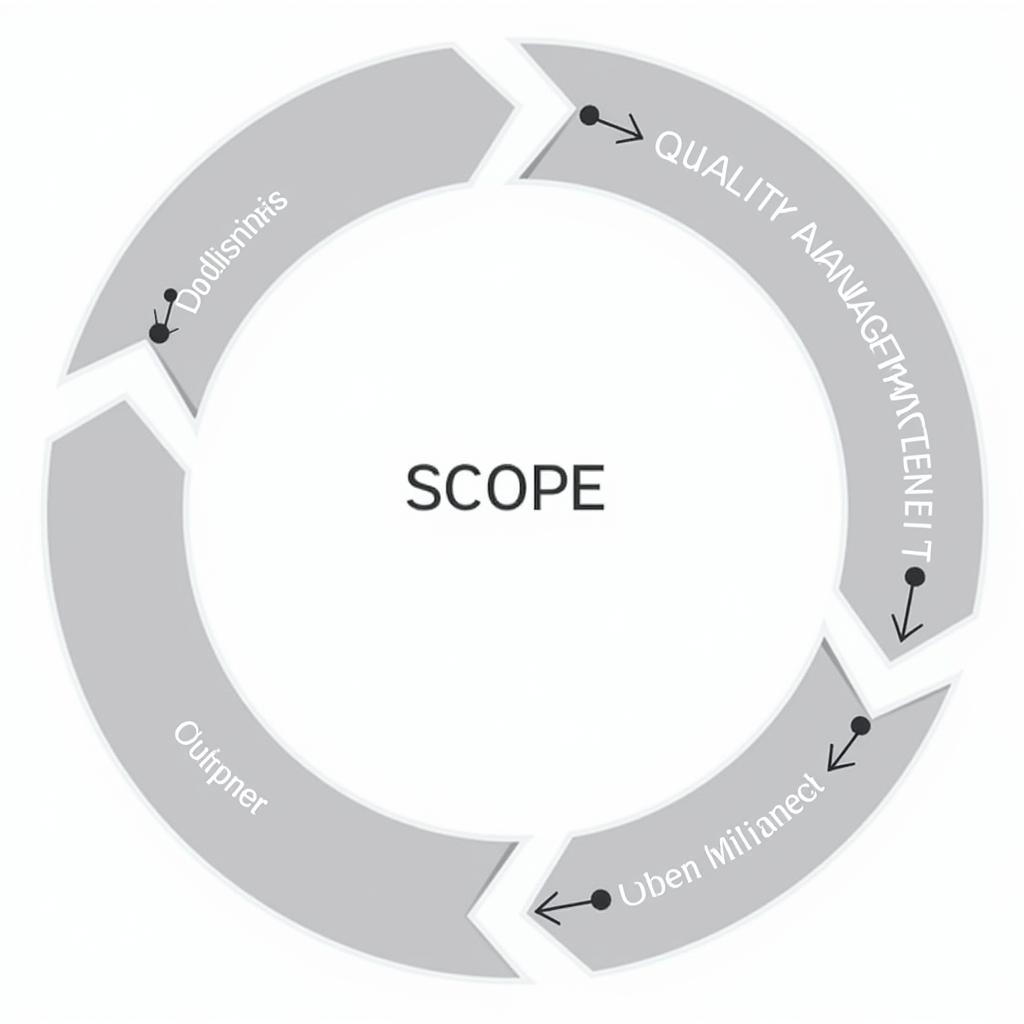A well-defined Quality Management Policy forms the backbone of any successful organization. It outlines the company’s commitment to delivering high-quality products and services that consistently meet customer expectations. This guide delves into the intricacies of crafting an effective Quality Management Policy.
 Quality Management System Framework
Quality Management System Framework
What is a Quality Management Policy?
A Quality Management Policy is a formal document that states an organization’s overall intentions and direction regarding quality. It serves as a roadmap for achieving quality objectives and outlines the company’s commitment to continuous improvement. It is a high-level document that guides the development and implementation of a Quality Management System (QMS).
Why is a Quality Management Policy Important?
A Quality Management Policy is crucial for several reasons:
- Customer Satisfaction: It demonstrates a commitment to meeting customer needs and expectations, leading to increased satisfaction and loyalty.
- Improved Efficiency: By defining clear quality objectives, it helps streamline processes, reduce errors, and enhance overall efficiency.
- Competitive Advantage: A strong quality focus can set an organization apart from competitors and enhance its reputation in the market.
- Continuous Improvement: It fosters a culture of continuous improvement by setting standards and encouraging regular assessments.
Key Elements of a Quality Management Policy
An effective Quality Management Policy typically includes the following elements:
- Purpose and Scope: Clearly define the purpose of the policy and its scope within the organization.
- Quality Objectives: Outline specific, measurable, achievable, relevant, and time-bound quality objectives.
- Commitment to Quality: State the organization’s commitment to meeting customer requirements and continuously improving its QMS.
- Responsibilities and Authority: Define roles, responsibilities, and authority for quality-related activities within the organization.
- Resources: Outline the resources allocated to support the implementation and maintenance of the QMS.
- Communication: Establish a framework for effective communication regarding quality-related matters within the organization and with external stakeholders.
- Review and Revision: Specify the process for regular review and revision of the Quality Management Policy to ensure its continued suitability and effectiveness.
Steps to Develop a Quality Management Policy
Developing a comprehensive Quality Management Policy involves a structured approach:
- Define the Scope: Determine the areas, departments, or processes the policy will cover.
- Identify Stakeholders: Recognize all internal and external stakeholders affected by the policy.
- Establish Quality Objectives: Set clear and measurable goals aligned with the organization’s overall strategic objectives.
- Draft the Policy: Write a concise, clear, and easily understandable policy document.
- Communicate and Train: Ensure all employees are aware of the policy, its implications, and their roles in its implementation.
- Implement the Policy: Put the policy into action through procedures, work instructions, and training programs.
- Review and Revise: Regularly review the policy’s effectiveness and make necessary revisions based on internal audits, management reviews, and changing business needs.
 Quality Management Policy Development Cycle
Quality Management Policy Development Cycle
Implementing and Maintaining the Policy
Successful implementation of a Quality Management Policy requires:
- Leadership Commitment: Top management must champion the policy and demonstrate a visible commitment to quality.
- Employee Involvement: Engage employees at all levels in the implementation process to foster ownership and accountability.
- Effective Communication: Establish clear communication channels to disseminate policy-related information and gather feedback.
- Resource Allocation: Provide adequate resources, including training, tools, and technology, to support the policy’s implementation.
- Monitoring and Measurement: Implement a system for monitoring and measuring the effectiveness of the Quality Management System and track progress toward quality objectives.
Benefits of a Robust Quality Management Policy
Organizations with a well-defined and implemented Quality Management Policy reap significant benefits:
- Enhanced Customer Satisfaction: Consistent delivery of high-quality products and services leads to greater customer satisfaction and loyalty.
- Improved Operational Efficiency: Streamlined processes, reduced errors, and better resource utilization enhance operational efficiency and productivity.
- Increased Profitability: Improved quality reduces waste, rework, and customer complaints, positively impacting profitability.
- Enhanced Reputation: A strong quality focus enhances brand reputation and builds trust with customers and stakeholders.
- Continuous Improvement Culture: The policy fosters a culture of continuous improvement, leading to ongoing innovation and enhanced competitiveness.
FAQs
What is the difference between quality control and quality assurance?
Quality control is about inspecting and testing products or services to detect defects, while quality assurance focuses on preventing defects from occurring in the first place through proactive measures.
How often should the Quality Management Policy be reviewed?
The policy should be reviewed at least annually or more frequently if significant changes occur in the organization’s operations, customer requirements, or regulatory environment.
Who is responsible for developing the Quality Management Policy?
While top management has ultimate responsibility, it’s best to involve representatives from different departments to ensure a comprehensive and well-rounded policy.
Need Help?
For assistance with developing and implementing a robust Quality Management Policy, contact us at Phone Number: 0373298888, Email: [email protected], or visit us at 86 Cầu Giấy, Hà Nội. Our team is available 24/7 to help you achieve your quality goals.

